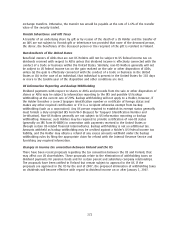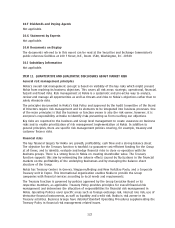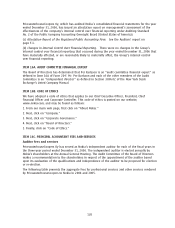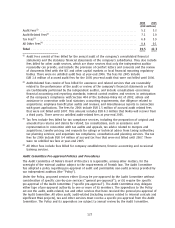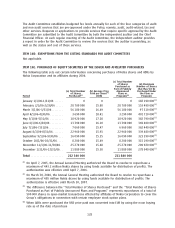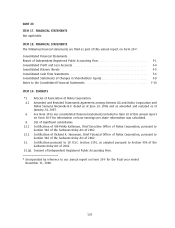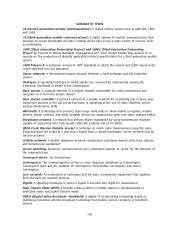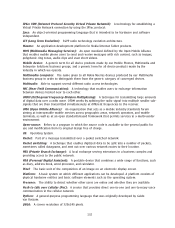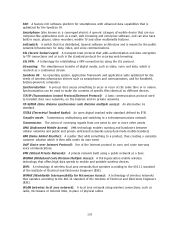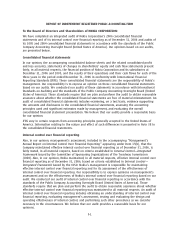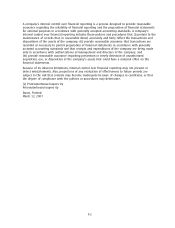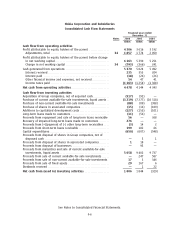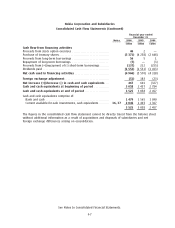Nokia 2006 Annual Report Download - page 132
Download and view the complete annual report
Please find page 132 of the 2006 Nokia annual report below. You can navigate through the pages in the report by either clicking on the pages listed below, or by using the keyword search tool below to find specific information within the annual report.EDGE (Enhanced Data Rates for Global Evolution):
A technology to boost cellular network capacity
and increase data rates of existing GSM networks to as high as 473 Kbit/s.
Engine:
Hardware and software that perform essential core functions for telecommunication or
application tasks. A mobile device engine includes, for example, the printed circuit boards, radio
frequency components, basic electronics and basic software.
ETSI (European Telecommunications Standards Institute):
Standards produced by the ETSI
contain technical specifications laying down the characteristics required for a telecommunications
product.
Firewall Gateways:
Network points that act as an entrance to another network.
GPRS (General Packet Radio Services):
A service that provides packet switched data, primarily for
second generation GSM networks.
GPS (Global Positioning System):
Satellitebased positioning system that is used for reading
geographical position and as a source of the accurate coordinated universal time.
GSM (Global System for Mobile Communications):
A digital system for mobile communications
that is based on a widely accepted standard and typically operates in the 900 MHz, 1800 MHz, and
1900 MHz frequency bands.
HSPA (High Speed Packet Access):
A wideband code division multiple access feature that refers to
both 3GPP highspeed downlink packet access and highspeed uplink packet access (see also HSDPA
and HSUPA).
HSDPA (High Speed Downlink Packet Access):
A wideband code division multiple access feature
that provides high data rate transmission in a WCDMA downlink to support multimedia services.
HSUPA (High Speed Uplink Packet Access):
A wideband code division multiple access feature that
provides high data rate transmission in a WCDMA uplink to support multimedia services.
IHSPA (InternetHSPA):
A 3GPP standardsbased simplified network architecture innovation from
Nokia implemented as a data overlay radio access layer that can be built with already deployed
WCDMA base stations.
IEEE (Institute of Electrical and Electronics Engineers):
A nonprofit, technical professional
association that is an authority in technical areas ranging from computer engineering, biomedical
technology and telecommunications, to electric power, aerospace and consumer electronics, among
others.
IETF (The Internet Engineering Task Force):
An international organization consisting of over 80
working groups responsible for developing Internet standards.
IMS (IP Multimedia Subsystem):
A subsystem providing IP multimedia services that complement
the services provided by the circuit switched core network domain.
IP (Internet Protocol):
A network layer protocol that offers a connectionless Internet work service
and forms part of the TCP/IP protocol.
IPR (Intellectual Property Rights):
Laws protecting the economic exploitation of intellectual
property, a generic term used to describe products of human intellect, for example, patents, that
have an economic value.
IP Network (Internet Protocol Network):
A data communications network based on the Internet
protocol.
IPSec (Internet Protocol Security):
A protocol that provides Internet security architecture for data
confidentiality, data integrity, and data authentication to support secure exchange of packets at the
IP layer.
131


